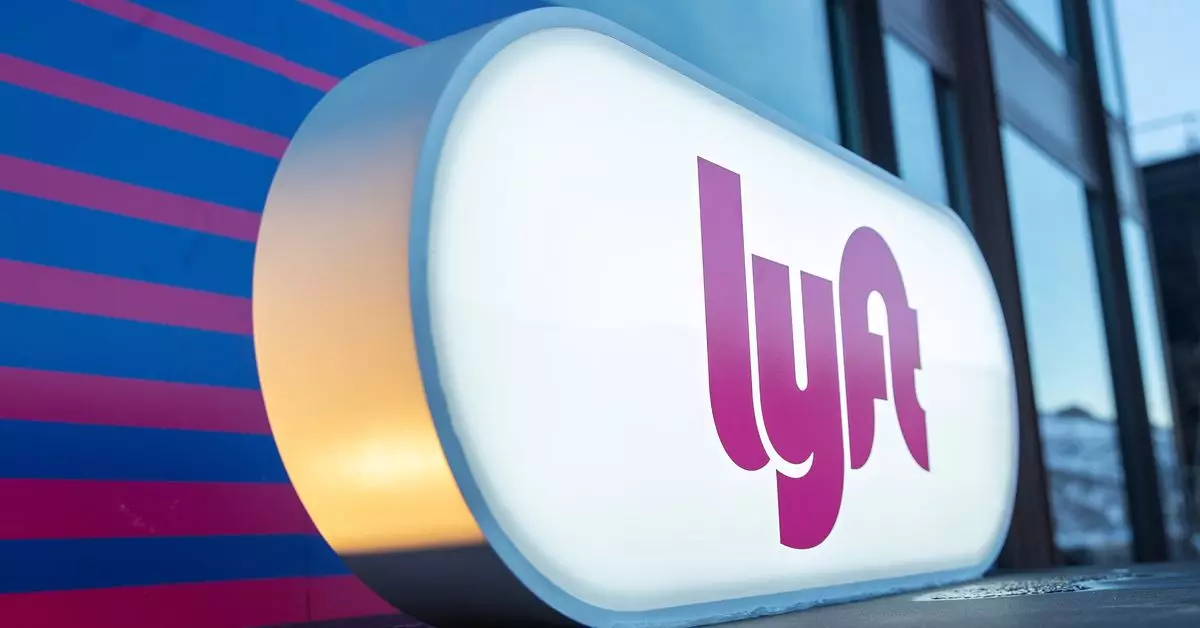In a significant move aimed at protecting workers, the Federal Trade Commission (FTC) recently announced that rideshare giant Lyft will face a penalty of $2.1 million, following accusations of deceptive advertising practices concerning driver earnings. This settlement shines a spotlight on the practices prevalent within gig economy companies and raises vital questions about the transparency of their earnings claims. Launched primarily to benefit drivers, these new regulations could set a precedent that might reshape the gig economy landscape.
The FTC’s investigation revealed that Lyft’s advertisements frequently touted income figures that painted an overly optimistic picture for potential drivers. For instance, Lyft claimed that drivers in Atlanta could earn “up to $33 per hour,” a figure not representative of the average earnings, but rather based on the highest-earning fifth of drivers. This creates a vast disparity, misleading many individuals seeking flexible job opportunities in a sector that’s often praised for its independence and potential financial gains. It is crucial to understand that such representations foster an illusion of income that does not reflect the reality for the majority of drivers who find themselves significantly underpaid.
Moreover, the FTC highlighted that Lyft’s figures improperly included tips, further skewing the perceived earning potential. This led to an inflation of actual earnings by as much as 30%, a significant overestimation for most drivers. FTC Chair Lina M. Khan emphasized the importance of honesty in the workplace, declaring it “illegal to lure workers with misleading claims about how much they will earn on the job.” Such remarks reinforce the necessity for regulatory bodies to monitor and enforce accurate advertising practices in the gig economy.
The settlement also addresses Lyft’s promotional guarantees, which were another source of confusion for drivers. Lyft reportedly advertised guarantees that promised income for completing a set number of rides, such as $975 for 45 rides in a weekend. However, these guarantees were often misinterpreted by drivers as bonuses layered on top of their actual earnings. In reality, these offers functioned as conditional minimum pay guarantees, forcing drivers to meet specific requirements to receive the stated amounts. Under the new agreement, Lyft is mandated to clarify such promotions to eliminate any misconceptions about the nature of their earnings guarantees.
This change could potentially foster an environment of greater trust between drivers and the platform, but it also highlights an ongoing issue: the need for gig economy companies to provide clear and honest income projections. If Lyft is to regain the trust of its drivers, transparency should become a cornerstone of its communication strategy.
In light of the settlement, Lyft has publicly expressed its commitment to adjusting how it communicates earnings potential to drivers. The company claims to have made recent changes to address these issues, stating its intent to adhere strictly to the FTC’s guidelines moving forward. While this response is a positive step, it begs the question: will these changes be enough to restore faith in a system that many drivers feel has exploited them financially?
Beyond Lyft, the implications of this settlement extend into the broader gig economy. For years, companies like Lyft and Uber have faced scrutiny at various levels of government. Recently, states like Massachusetts and cities such as New York have begun imposing stricter labor regulations that offer rideshare drivers a minimum wage and additional protections. As the FTC continues to hold firms accountable for their business practices, we could see a shift in how gig economy companies operate, driving them toward fairer treatment of their workforce.
The FTC’s actions against Lyft send a clarion call to the gig economy about the importance of ethical marketing and the protection of workers’ rights. As regulations tighten and oversight becomes increasingly vigilant, companies must adapt to ensure they remain compliant while fostering genuine relationships with their drivers. Ultimately, this settlement could serve as a catalyst for change within the industry, paving the way for fairer practices that prioritize the livelihoods of those who power the ride-sharing services. The challenge now lies in monitoring these companies to ensure that compliance translates into tangible improvements in the lives of drivers across the United States.


Leave a Reply